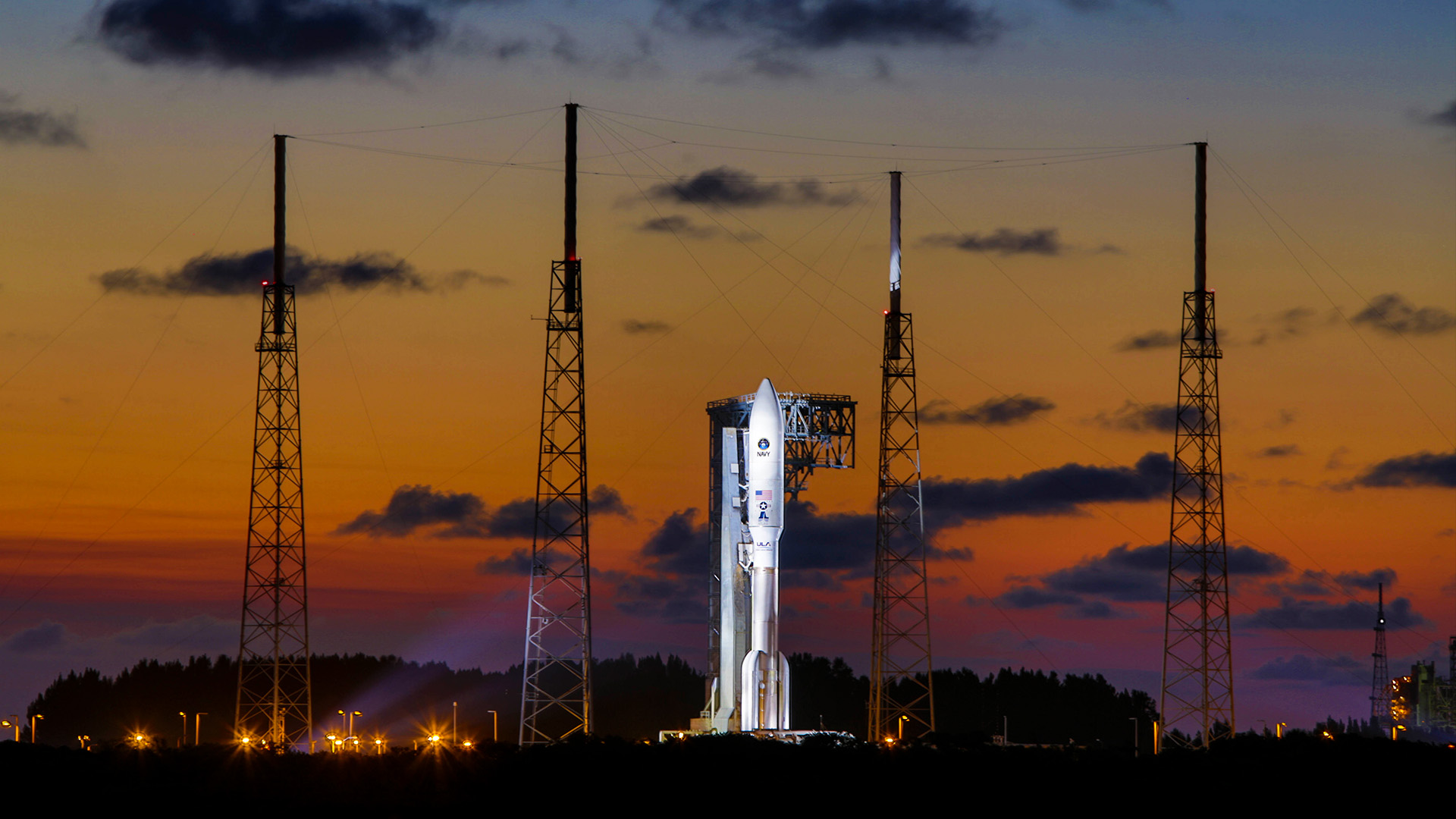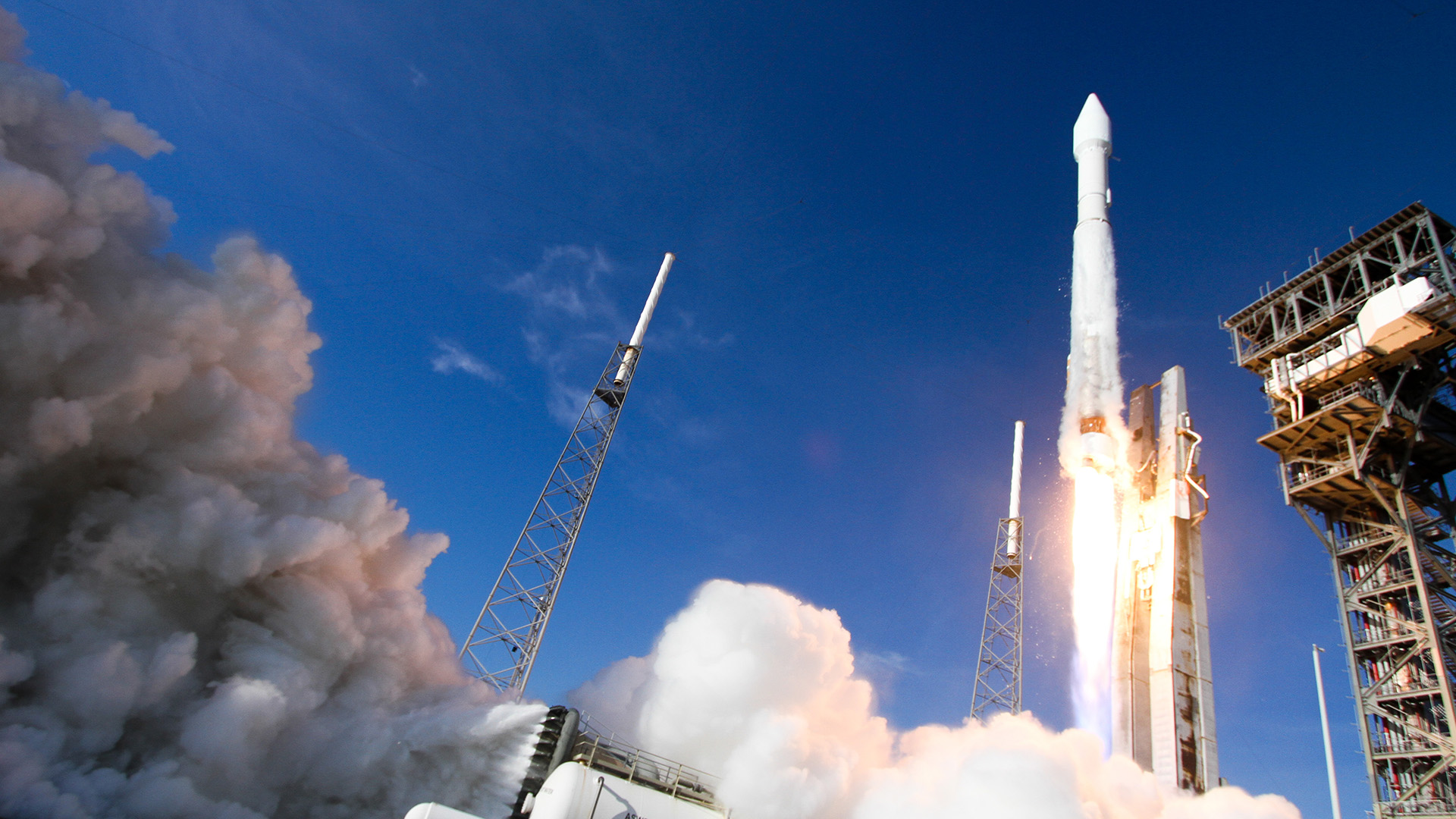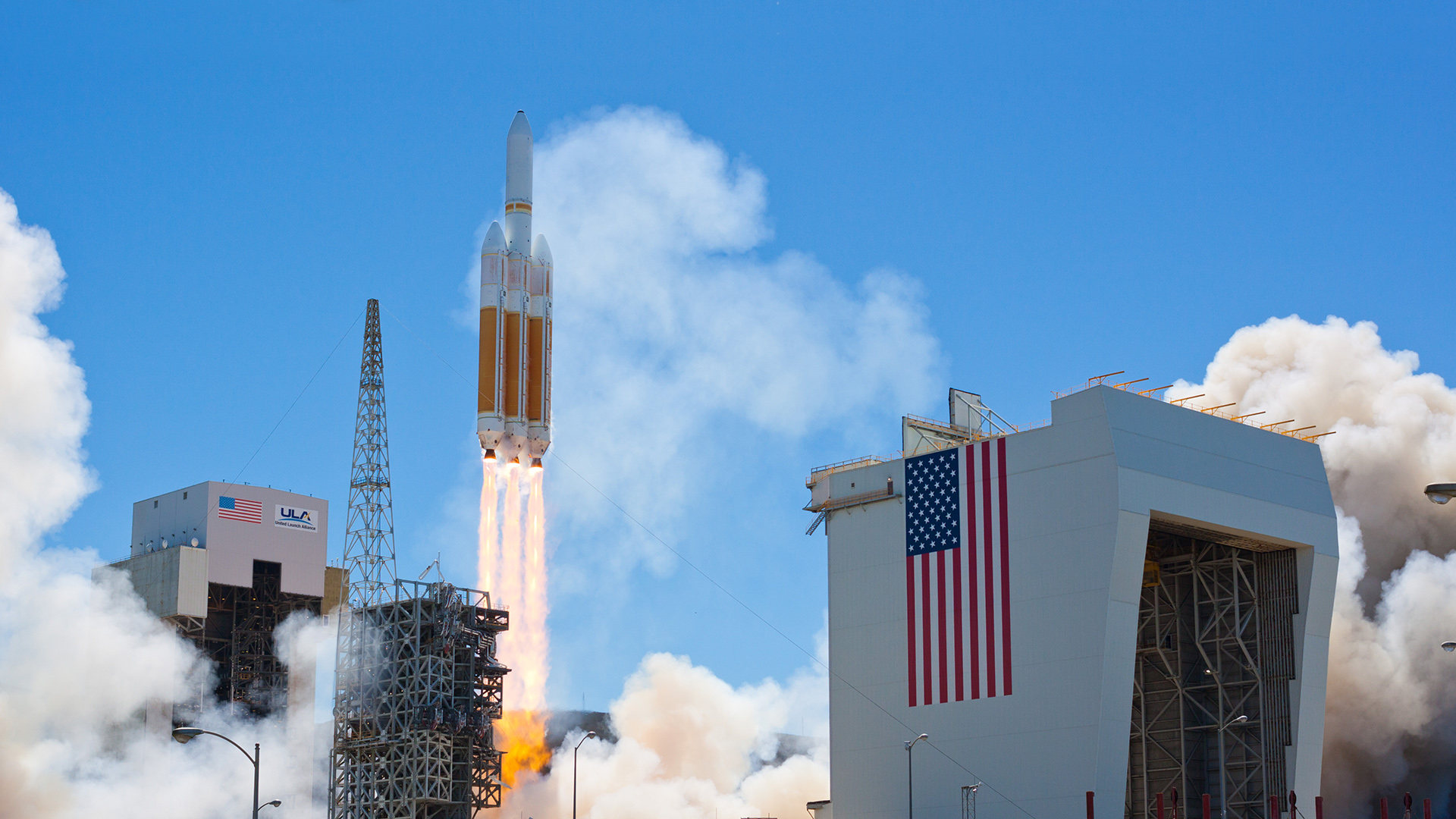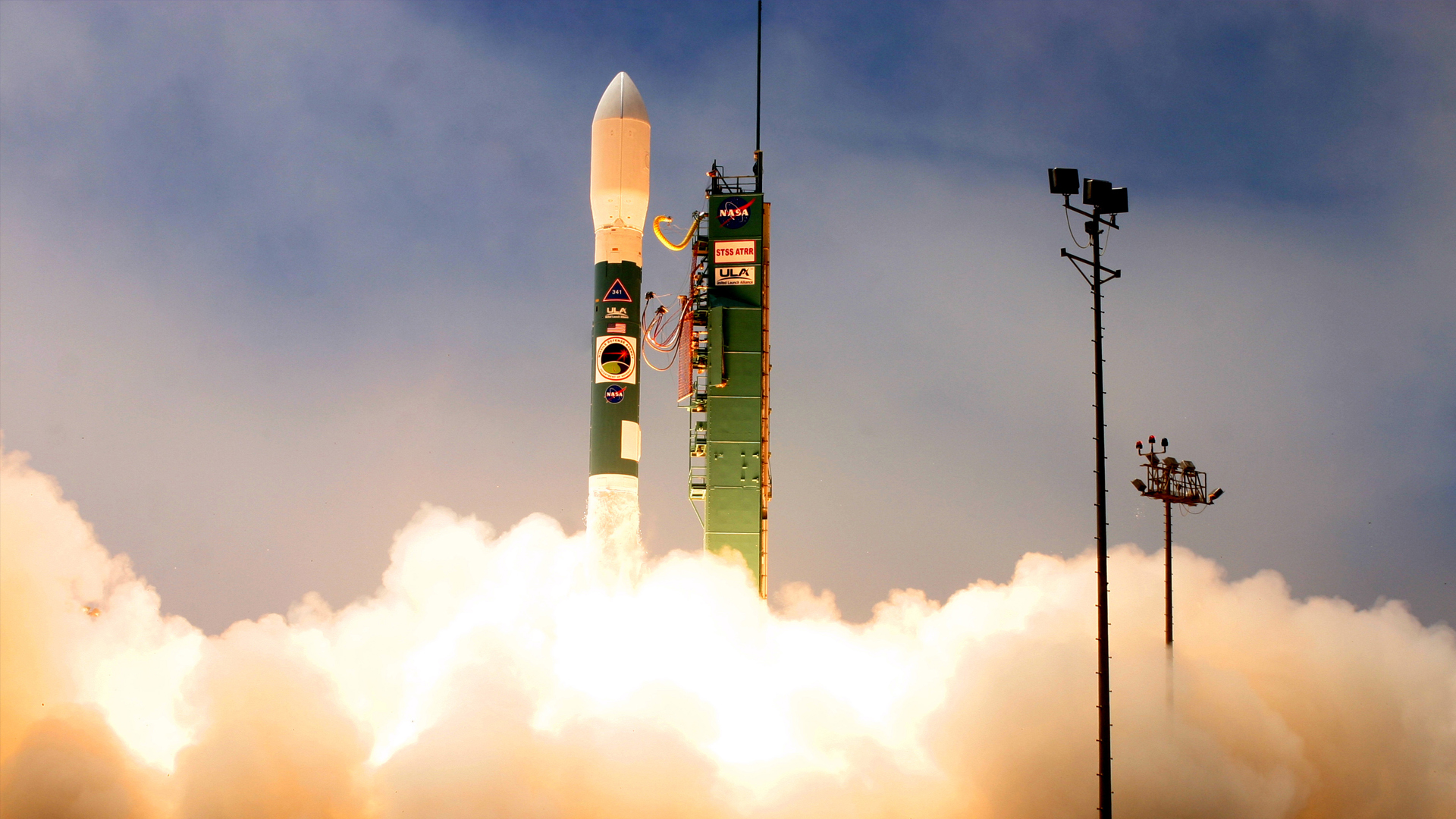Missions
Next LaunchUnited Launch Alliance Successfully Launches GRAIL Moon Mission for NASA on Final Flight from Space Launch Complex 17
Delta II GRAIL Mission Booklet
United Launch Alliance Successfully Launches GRAIL Moon Mission for NASA on Final Flight from Space Launch Complex 17
Cape Canaveral Air Force Station, Fla., (Sept. 1, 2011) - A United Launch Alliance (ULA) Delta II rocket carrying the Gravity Recovery and Interior Laboratory (GRAIL) spacecraft for NASA lifted off from Space Launch Complex (SLC)-17B here at 9:08 a.m. EDT today. This launch marks the 9th flight for ULA in 2011, the 49th Delta II mission for NASA and the last currently-planned flight from this launch complex.
“With the final launch from SLC-17, we reflect on the tremendous historical significance of this complex and the impact of the military and scientific payloads that began their missions from this site,” said Michael Gass, ULA president and CEO. “From the Global Positioning System satellites launched for the U.S. Air Force, to NASA’s Mars rovers Spirit and Opportunity, in total this complex has been the origin for 259 critical Delta missions to protect our country and explore our universe.”
The GRAIL mission was launched aboard a Delta II Heavy 7920H-10 configuration vehicle featuring a ULA first stage booster powered by a Pratt & Whitney Rocketdyne RS-27A main engine and nine Alliant Techsystems (ATK) strap-on solid rocket motors. An Aerojet AJ10-118K engine powered the second stage. The payload was encased by a 10-foot-diameter composite payload fairing.
"ULA is extremely proud to be a part of NASA’s team for the GRAIL mission,” said Jim Sponnick, ULA vice president, Mission Operations. “Today’s successful launch is the third NASA mission ULA has launched in just three months. The timing and precision of this campaign is a testament to our commitment to providing reliable, cost-effective space launch services to our customers.”
The GRAIL mission will place two spacecraft into the same orbit around the Moon. As they fly over areas of greater and lesser gravity, caused both by visible features such as mountains and craters and by masses hidden beneath the lunar surface, they will move slightly toward and away from each other. An instrument aboard each spacecraft will measure the changes in their relative position very precisely, and scientists will translate this information into a high-resolution map of the Moon's gravitational field. GRAIL's primary science objectives are to determine the structure of the lunar interior, from crust to core, and to advance understanding of the thermal evolution of the moon.
ULA's next launch is the Delta II NPOESS Preparatory Project (NPP) mission for NASA currently scheduled for Oct. 25, 2011 from Space Launch Complex-2 at Vandenberg Air Force Base, Calif.
ULA program management, engineering, test and mission support functions are headquartered in Denver, Colo. Manufacturing, assembly and integration operations are located at Decatur, Ala., Harlingen, Texas, San Diego, Calif. Launch operations are located at Cape Canaveral AFS, Fla., and Vandenberg AFB, Calif.
For more information on ULA, visit the ULA Web site at www.ulalaunch.com, or call the ULA Launch Hotline at 1-877-ULA-4321 (852-4321).





